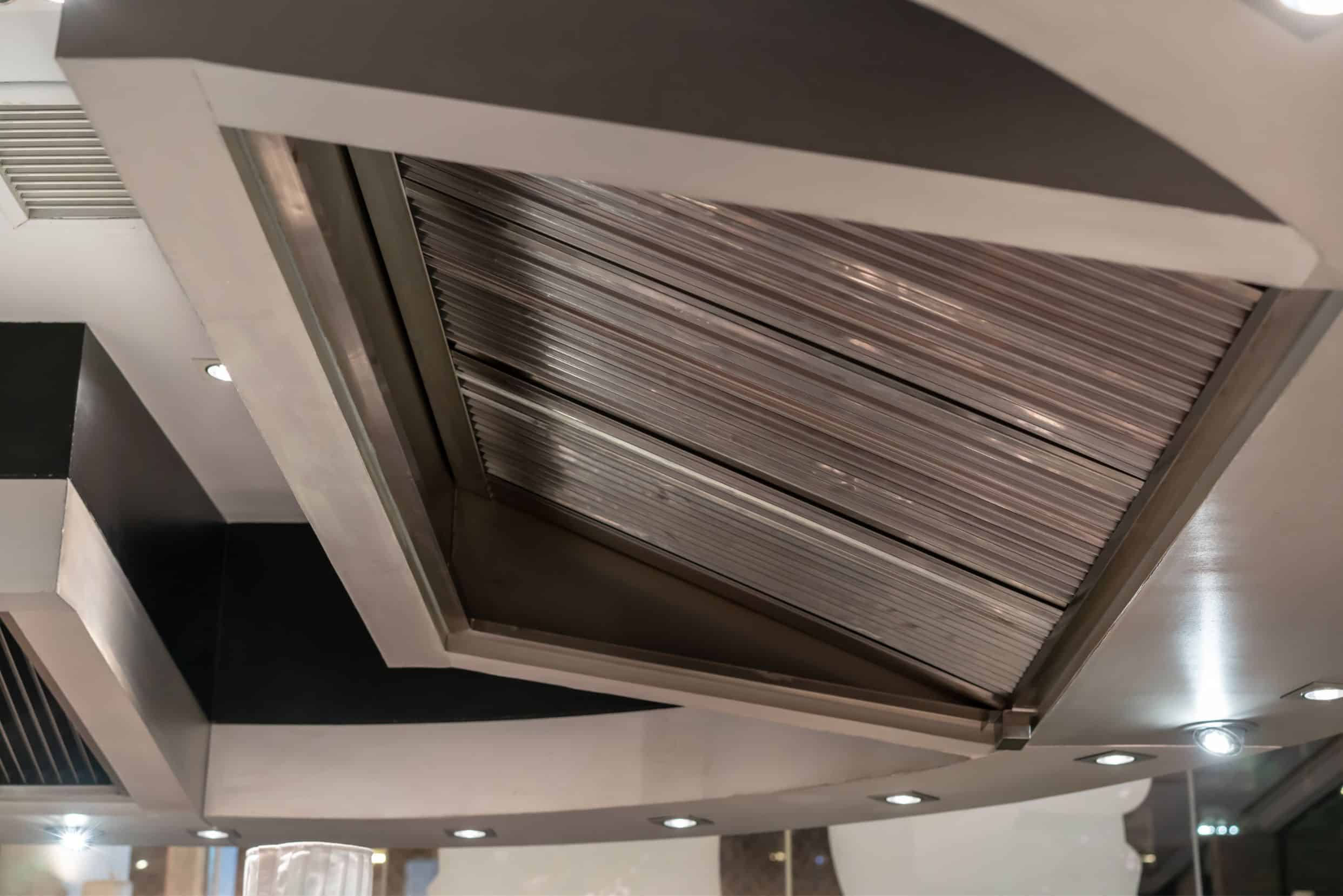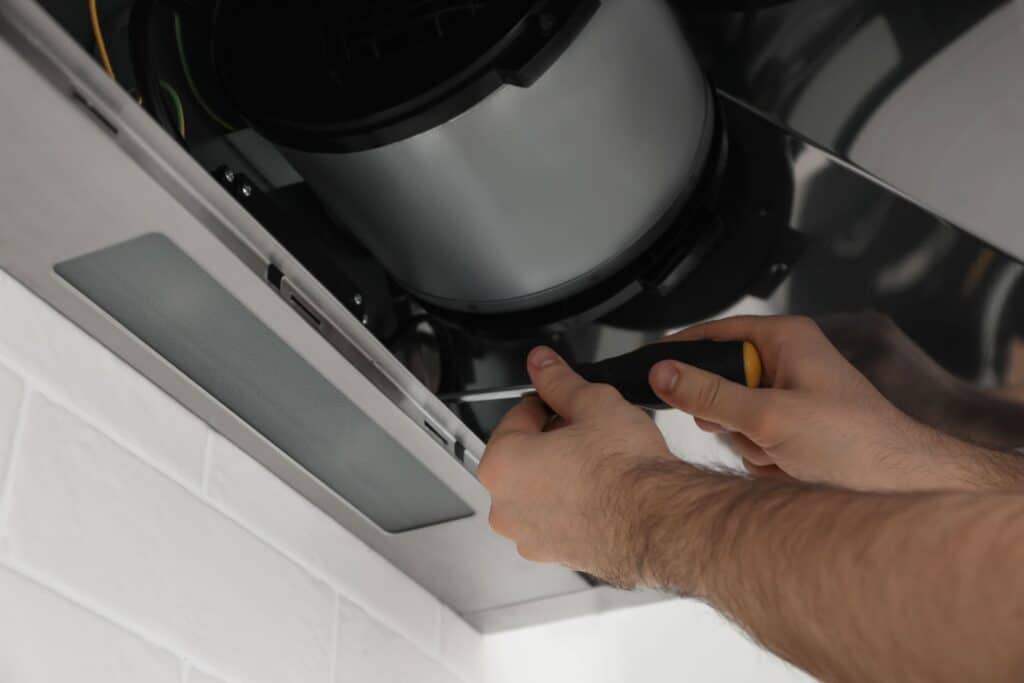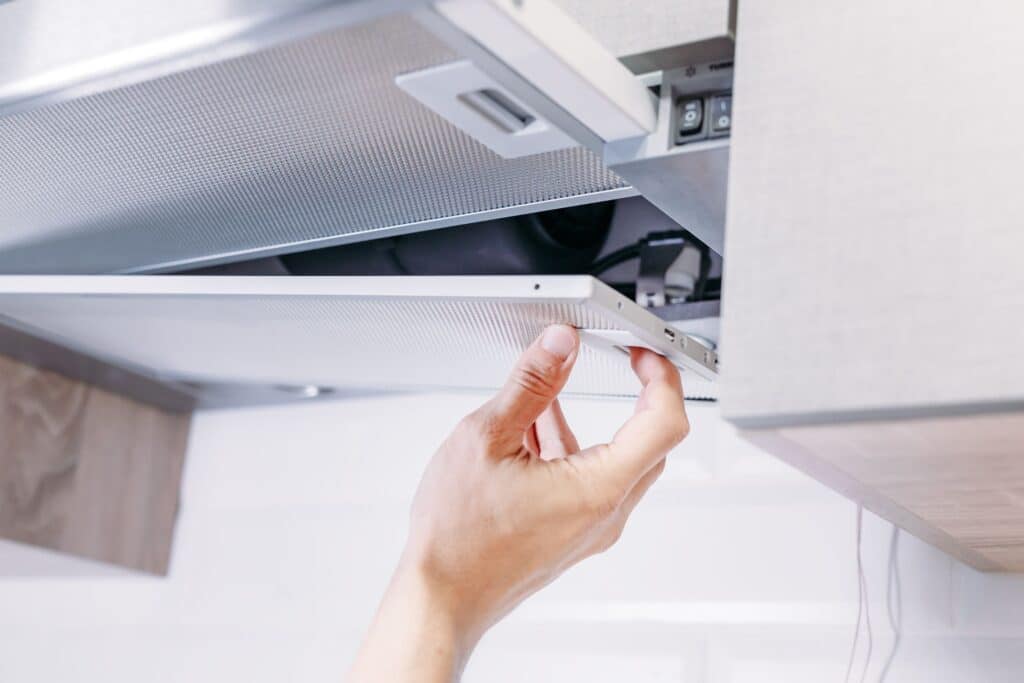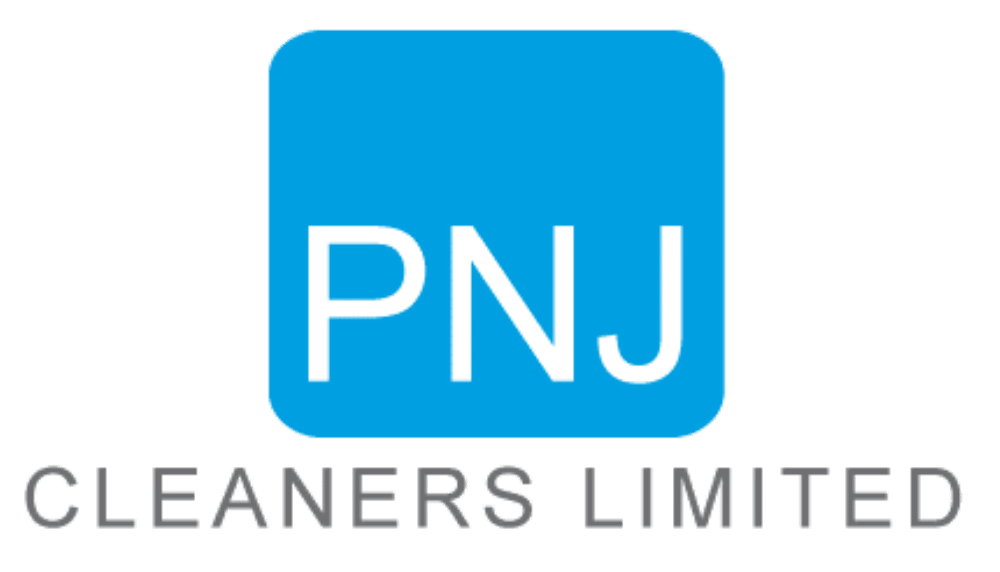
Commercial Extractor Fan Installation
- Free Quotes and Estimates
- Variety of Payment Options
- Highly Experienced and Certified Professionals
- Maintenance and Repairs Available
- Highly Competitive Fees
- Fast and Excellent Customer Service
We have years of experience in Extractor Fan Installation
Our certified professionals have had industry-leading training and have years of commercial fan installation experience behind them.

Commercial Kitchen Ventilation
Making your commercial kitchen clean and safe is essential. PNJ Cleaning’s experts can install a kitchen extractor fan for you to adhere to rigorous industry standards.

We are partnered with industry-leading commercial extractor fan suppliers
We do not settle for anything less than the best. That is why we are partnered with industry-recognised suppliers to ensure you have the best quality extractor fan for your commercial kitchen.

FAQs
What ventilation is required in a commercial kitchen?
In most cases, larger commercial kitchens require a mechanical extraction system with a fan and a filter. In this scenario, PNJ Cleaners can provide a suitable extractor fan and ducting solution.
If you run a smaller kitchen, air supplied via ventilation grills, windows, and doors is suitable. However, to ensure maximum safety is adhered, a commercial extractor fan and air duct system should be installed.
Is it illegal to not have an extractor fan in a kitchen in the UK?
Yes, since 2006, any kitchen built during or after that year must have some form of mechanical ventilation, as required by part F of building regulations.
If your kitchen was built before 2006, you are not legally required to have ventilation. However, we strongly recommend installing it, as the lack of ventilation can lead to mold growth over time.
For kitchen ventilation, you have two main options: a kitchen extractor fan, typically installed on an exterior wall, and a cooker hood, usually placed above the stove.
The key differences between them are in strength and size. A cooker hood is more effective at extraction but tends to be noisier and consumes more electricity. It is primarily used while cooking to remove smoke, steam, and odors that can spread throughout your kitchen.
In contrast, a kitchen extractor fan is quieter but less powerful. Depending on the model, it can automatically activate when it detects high humidity levels, which is common in kitchens.
What is the minimum ventilation rate for commercial kitchens?
Overall ventilation rates for commercial kitchens are recommended to be between 30 and 40 air changes per hour (ACH).
For a kitchen with a volume of 38 m³, the minimum required ventilation rate would be 1,140 m³/hr or 0.316 m³/sec.
What happens if a kitchen has no ventilation?
Cooking generates odors, fumes, moisture, and airborne grease that decrease indoor air quality. Prolonged exposure to these pollutants can result in various health issues, including:
- Respiratory illnesses: Inhaling cooking pollutants can irritate the lungs and may trigger or worsen conditions such as asthma, bronchitis, and other respiratory diseases.
- Eye irritation: Smoke and fumes from cooking can cause eye redness, itching, and tearing.
- Headaches and dizziness: Accumulation of carbon monoxide in a poorly ventilated kitchen can lead to headaches, dizziness, and, in severe cases, even death.
What is the alternative to an extractor fan in the kitchen?
In kitchens without an extractor fan, alternative ventilation options include a wall-mounted fan that directs airflow outside or a window fan. However, in most cases, extractor fans are more powerful and provide a higher ventilation rate overall.
Do you need a professional to install a kitchen extractor fan?
Due to the nature of the work that needs conducting (to also pass industry regulations), it is strongly recommended that you hire commercial extractor fan installers such as PNJ Cleaners.
Our certified experts have years of training and experience between them, and can install an industry-leading solution to keep your kitchen clean and safe.
Does a cafe need an extractor fan?
Yes, by law a cafe’s commercial kitchen above a certain size requires advanced extraction to adhere to health and safety guidelines.
What type of vent system is mostly used for commercial kitchens?
Type 1 commercial hood systems are mainly used to remove smoke, grease-laden air, and combustion by-products. Nearly all gas-powered equipment requires a Type 1 hood, as does electric equipment that produces smoke during cooking.
“Grease hoods,” as they are sometimes known, are typically installed over ranges, ovens, fryers, broilers, grills, and griddles. Type 1 hoods usually employ baffles or filters to capture grease particles from the air and should be cleaned daily to prevent fire hazards and ensure optimal performance. Some models are self-cleaning.
Type 2 restaurant hoods, often referred to as “heat hoods,” are designed primarily for removing heat, steam, and odors. They are commonly used over dishwashers, steamers, and other appliances that generate heat but do not produce smoke.
